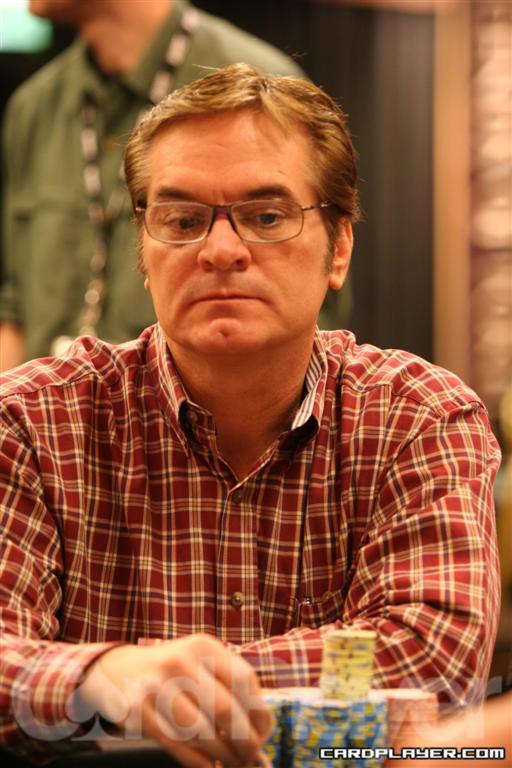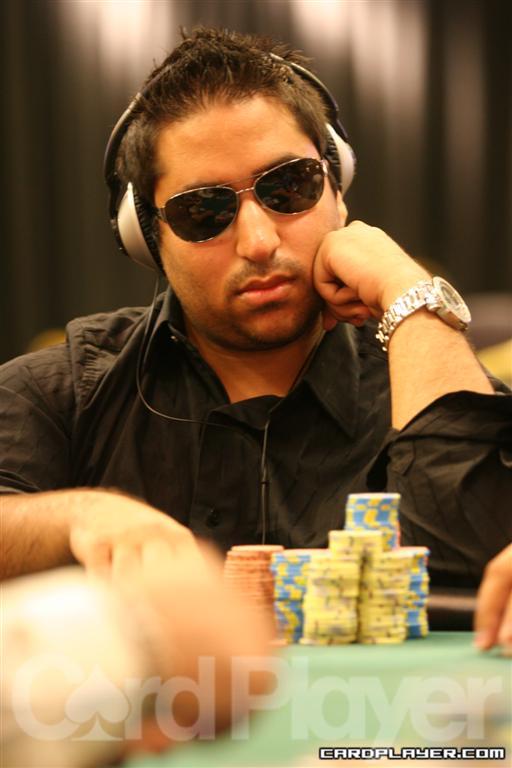 Every Thursday, Card Player sits down with some of the best in the game to discuss pivotal hands from the week’s biggest tournaments on the circuit.
Every Thursday, Card Player sits down with some of the best in the game to discuss pivotal hands from the week’s biggest tournaments on the circuit.
This week, while covering the World Poker Tour Legends of Poker tournament at the Bicycle Casino, we spoke to final table chip leader Amit Makhija about the hand that gave him his lead. Makhija entered day 4 with a large stack already, but took advantage of a mistake made by an opponent to give him a massive lead on the rest of the field. It was a lead that proved to be insurmountable as Makhija used his chips to bully his tablemates before the final six were set.
Makhija plays online as AMAK316 and is no stranger to the grind that playing 10 tables on a Sunday can be. Makhija has earned more than $350,000 in Online Player of the Year-qualifying events alone. Having said that, he has already proven himself on the live circuit, as well, earning another $350,000 in the last year with more to come Thursday night. After going deep at the EPT Grand Final in Monte Carlo, Makhija followed that up with a final-table finish at the World Series of Poker. Tonight, he goes for his first WPT win.
 Philip Stark raised to 36,000 on the button, and Ron Jenkins made the call from the small blind. Amit Makhija reraised to 110,000 from the big blind, and Stark got out of the way.
Philip Stark raised to 36,000 on the button, and Ron Jenkins made the call from the small blind. Amit Makhija reraised to 110,000 from the big blind, and Stark got out of the way.
Jenkins called, and the flop came down J 6
6 5
5 . Jenkins led out for 120,000, and Makhija reraised to 260,000. Jenkins called.
. Jenkins led out for 120,000, and Makhija reraised to 260,000. Jenkins called.
The turn was the 5 , pairing the board, and Jenkins moved all in for 380,000. Makhija, covering Jenkins by just 100,000, instantly called and tabled A
, pairing the board, and Jenkins moved all in for 380,000. Makhija, covering Jenkins by just 100,000, instantly called and tabled A ,J
,J . Jenkins showed 9
. Jenkins showed 9 7
7 for a gutshot with a flush draw, and the river 9
for a gutshot with a flush draw, and the river 9 wasn't enough for Jenkins.
wasn't enough for Jenkins.
Makhija took the pot and increased his stack to 1.65 million, a dominating lead at that time in the tournament.
The Interview
Julio Rodriguez: You repopped it from the big blind. Were you squeezing or just getting value from your hand?
 Amit Makhija: Well, it was a squeeze, but I also knew my hand was good. The guy on the button [Philip Stark] had like 30 big blinds, and he was raising pretty wide. So, I thought by reraising from the big blind, I would call if he decided to shove. The other guy [Ron Jenkins] I had position on, and I figured he was flatting with any two cards. I’m holding A-J suited, and that is so far ahead of his range in that spot.
Amit Makhija: Well, it was a squeeze, but I also knew my hand was good. The guy on the button [Philip Stark] had like 30 big blinds, and he was raising pretty wide. So, I thought by reraising from the big blind, I would call if he decided to shove. The other guy [Ron Jenkins] I had position on, and I figured he was flatting with any two cards. I’m holding A-J suited, and that is so far ahead of his range in that spot.
JR: What’s your opinion of your opponent at this point?
AM: To be honest, he was kind of donkish. He was playing a lot of hands and playing them passively out of position. I kind of wanted him to call me, because we were both pretty deep at that point. I knew he was kind of looney and would stack off to me pretty light.
JR: He leads the flop for 120,000. Doesn’t that seem like a kind of funky bet considering his action preflop?
AM: Uh, no. That’s pretty normal for bad players. When they flop nothing, they try to lead in and take down pots because they don’t want to risk too many chips with a check-raise. The problem with that thinking is that they have a hard time representing something big, because if they had a monster, they would check it hoping to get maximum value.
JR: What kind of hand were you putting him on?
AM: I figured he was just holding a weak draw, or maybe air, and I wanted to keep him in the pot, so I decided to raise pretty small. I made it 260,000, which was just over a min-raise.
JR: Do you think that your small reraise forced him to stay in the pot given how much he already had put in?
AM: No, he snap-called me. His chips went into the pot immediately after I raised. He snap-fired out and then snap-called my raise. I knew, at that point, that he had nothing and was planning something weird on the turn to try to take it away.
JR: Well, you were right. He open-shoved the turn.
 AM: Yeah, he open-shoved [to put me all in] for about the other half of his stack. I didn’t even have to think about it. I called, knowing I was way ahead. The turn paired the board with a five, but there’s no way he’s open-shoving trip fives there. The board wasn’t exactly scary, so he’d probably try to get some value.
AM: Yeah, he open-shoved [to put me all in] for about the other half of his stack. I didn’t even have to think about it. I called, knowing I was way ahead. The turn paired the board with a five, but there’s no way he’s open-shoving trip fives there. The board wasn’t exactly scary, so he’d probably try to get some value.
As it turns out, he picked up a diamond draw with his gutshot, but the way he bet the turn, it was almost as if the diamond draw was just a fortunate coincidence for his hand. I’m pretty sure that he would have shoved the turn even if he didn’t pick up the extra outs. He looked like a pretty conservative guy, but I knew better because of a hand that Maria Ho told me about the day before that showed me that he likes to get out of line.
If I hadn’t played with him before, it may have been a tougher spot for me. The entire day, he was making bets that just didn’t make any sense. It was like he wanted to be aggressive but just didn’t know how.
JR: Would you ever use his line for a situation like this?
AM: Not for this situation. If I were him, I would’ve moved all in on the flop, that way he might actually have shown a little strength. I was calling, anyway, but it would’ve been a bet that made much more sense.
I might use his line when I have a strong hand against players who don’t know me and think I’m some random person. It looks really weak, and sometimes aggressive players will sense that.
JR: So, it’s not too terrible of a line if you have a big hand?
AM: Exactly. He just did it backwards. [Laughing] He did it like every bad player does it … with a bad hand.
JR: If only you thought he was a good player, it would have worked perfectly.
AM: [Laughing] Probably not. I pretty much had the nuts on that flop.








 J
J
 7
7

 6
6 5
5 . Jenkins led out for 120,000, and Makhija reraised to 260,000. Jenkins called.
. Jenkins led out for 120,000, and Makhija reraised to 260,000. Jenkins called. , pairing the board, and Jenkins moved all in for 380,000. Makhija, covering Jenkins by just 100,000, instantly called and tabled A
, pairing the board, and Jenkins moved all in for 380,000. Makhija, covering Jenkins by just 100,000, instantly called and tabled A ,J
,J . Jenkins showed 9
. Jenkins showed 9 7
7 for a gutshot with a flush draw, and the river 9
for a gutshot with a flush draw, and the river 9 wasn't enough for Jenkins.
wasn't enough for Jenkins.
 AM: Yeah, he open-shoved [to put me all in] for about the other half of his stack. I didn’t even have to think about it. I called, knowing I was way ahead. The turn paired the board with a five, but there’s no way he’s open-shoving trip fives there. The board wasn’t exactly scary, so he’d probably try to get some value.
AM: Yeah, he open-shoved [to put me all in] for about the other half of his stack. I didn’t even have to think about it. I called, knowing I was way ahead. The turn paired the board with a five, but there’s no way he’s open-shoving trip fives there. The board wasn’t exactly scary, so he’d probably try to get some value.